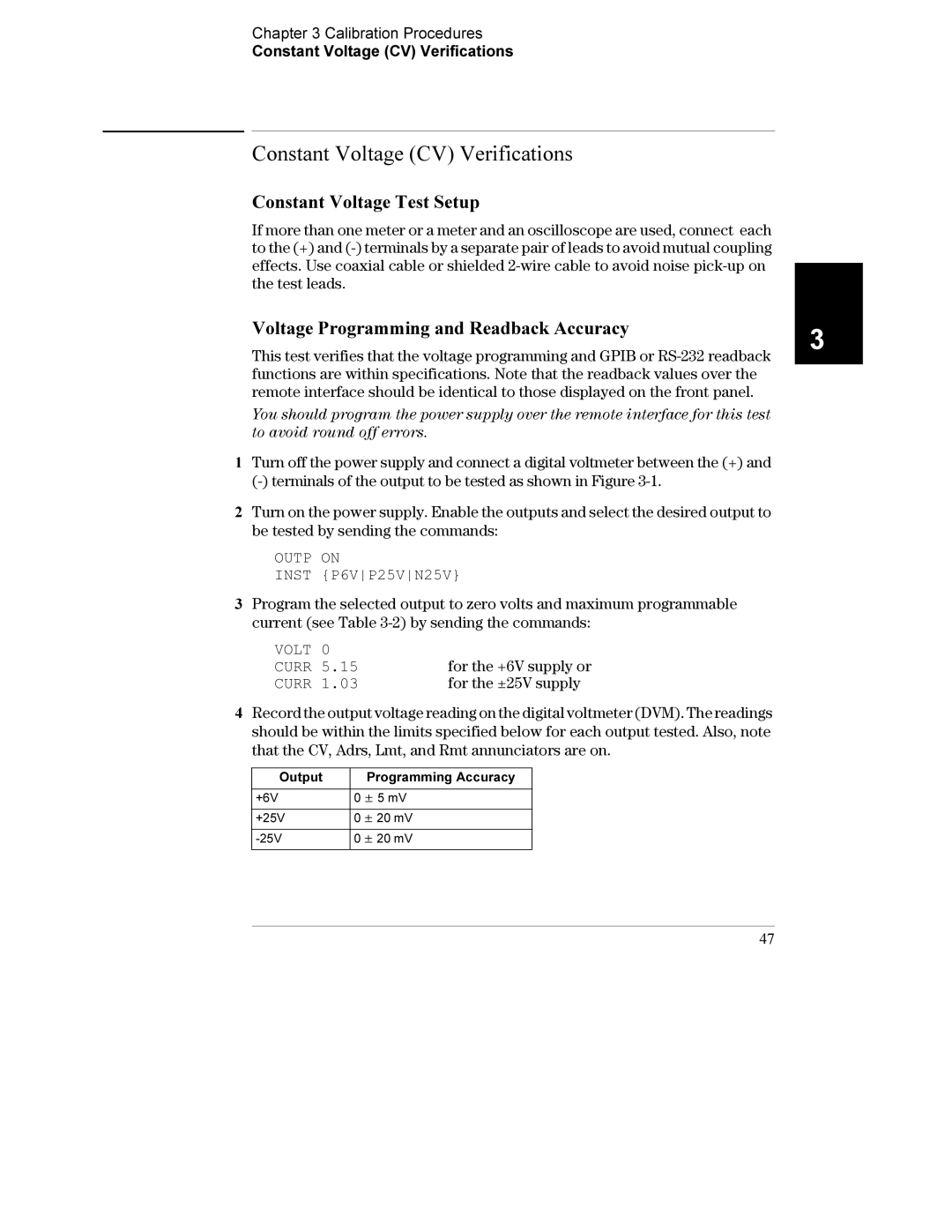
Chapter 3 Calibration Procedures
Constant Voltage (CV) Verifications
Constant Voltage (CV) Verifications
Constant Voltage Test Setup
If more than one meter or a meter and an oscilloscope are used, connect each to the (+) and
Voltage Programming and Readback Accuracy
This test verifies that the voltage programming and GPIB or
You should program the power supply over the remote interface for this test to avoid round off errors.
1Turn off the power supply and connect a digital voltmeter between the (+) and
2Turn on the power supply. Enable the outputs and select the desired output to be tested by sending the commands:
OUTP ON
INST {P6VP25VN25V}
3Program the selected output to zero volts and maximum programmable current (see Table
VOLT 0 |
| |
CURR | 5.15 | for the +6V supply or |
CURR | 1.03 | for the ±25V supply |
4Record the output voltage reading on the digital voltmeter (DVM). The readings should be within the limits specified below for each output tested. Also, note that the CV, Adrs, Lmt, and Rmt annunciators are on.
Output | Programming Accuracy |
|
|
+6V | 0 ± 5 mV |
|
|
+25V | 0 ± 20 mV |
|
|
0 ± 20 mV | |
|
|
47
3
